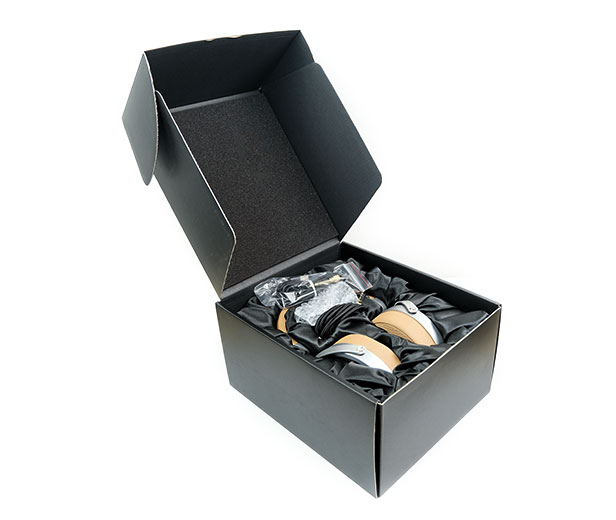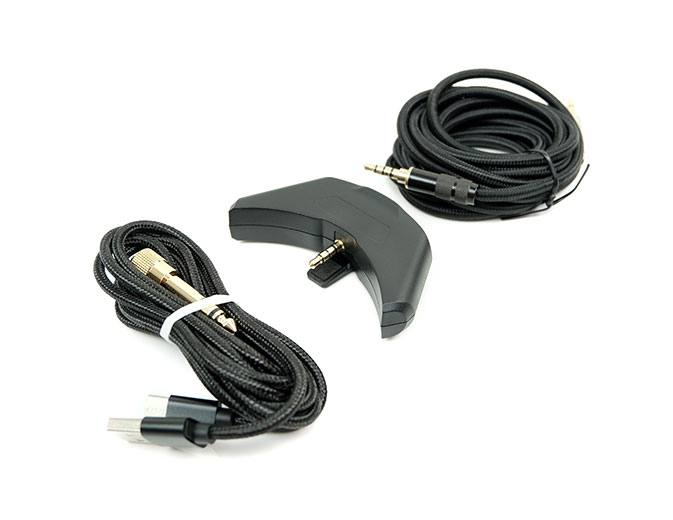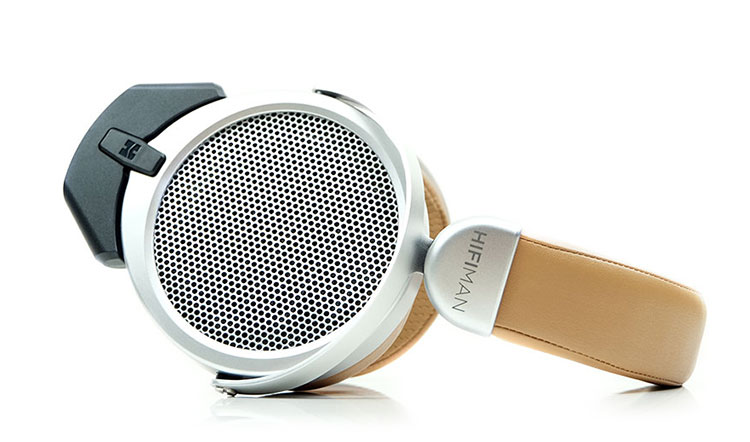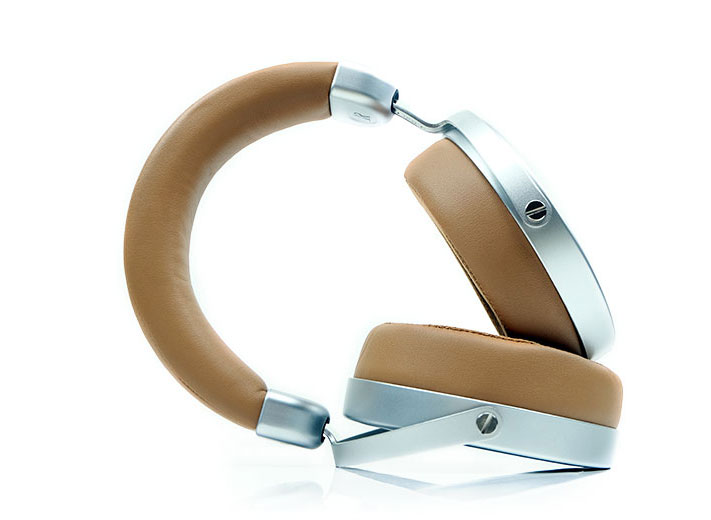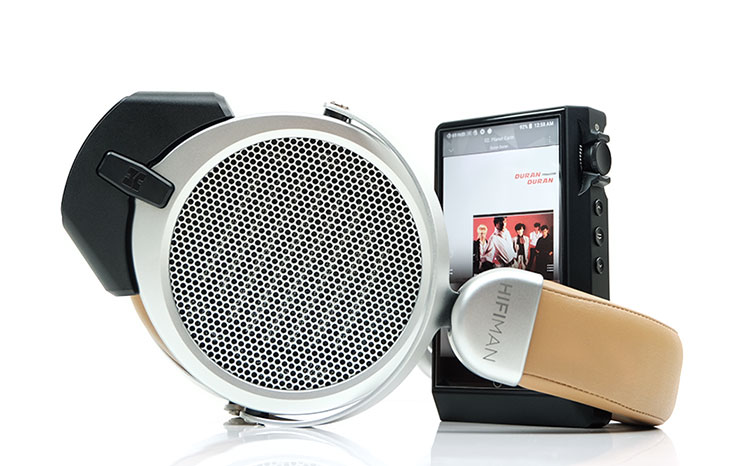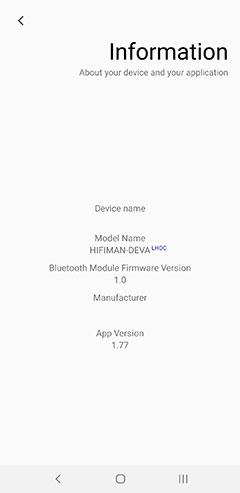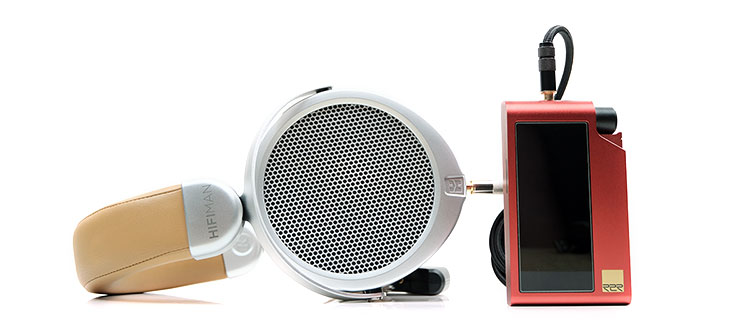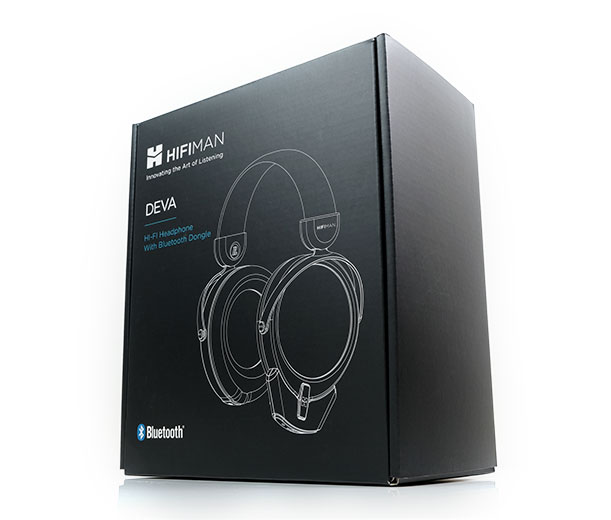The Hifiman Deva is the company’s second Bluetooth capable full-sized open planar headphone. Offering BT5.0 and LDAC decoding it is priced at $299.
Disclaimer: The Hifiman Deva is a sample in exchange for our honest opinion. We thank the team at Hifiman for giving us this opportunity.
To read more about Hifiman products we reviewed on Headfonics click here.
It seems Hifiman has been bitten by the Bluetooth bug for their headphones. We only just finished a review of their flagship wireless headphones, the Ananda BT then along comes another, the Deva.
This time, however, the approach is a little different. Yes, it is an open back planar and yes, it BT5.0 with LDAC capability. However, the price point is much lower at $299. This is Hifiman’s ‘music for the wireless masses’ and something imminently more affordable than the excellent Ananda BT.
It also looks radically different from almost every Hifiman headphone that came before it. In fact, when I first saw it I thought they must have hired a bunch of new designers in for this ‘high-end headphone’. It looks leagues above any aesthetic that have done before but, in the hand and on the ear, will it be competitive?
Tech Inside
NsD Driver
Hifiman has always been excellent with implementing trickle-down technology and they have done just that with the Deva. This is a $299 open back circumaural planar driver design with the same NEO “superman” Diaphragm or NsD tech stuffed inside the Sundara as well as the Ananda BT.
The specs bare a very close resemblance to the performance of the Sundara at almost 94dB SPL (93.5dB) for both, however, the impedance level is lower at 18Ω for the Deva compared to the Sundara’s 37Ω which might mean some slightly different materials in the final finished driver design.
Bluemini
Certainly, getting that easier to drive impedance rating for the Deva is quite important in order for it to sound optimal with the accompanying Bluemini Bluetooth module. This is where some of the clever stuff comes from with regard to how Deva operates.
But what is a Bluemini? In short, this is a detachable Bluetooth module with a built-in DAC and amplifier and the same component that you find inside the Ananda BT only now you have an option to use it or not.
By using a detachable module, connected via a 3.5mm TRRS balanced input socket, the Deva becomes a 3-in-1 headphone in terms of functionality.
The Deva not only operates in wireless and digital audio mode via the Bluemini, but it also can be detached to allow you to work the headphones in a traditional analog mode. That is one more option than the Ananda BT had and boy, would I have loved to have seen an analog option on the Ananda BT given its new punchier sound signature.
Bluemini Topology
Of course, the topology of the Deva, like the Ananda BT, has two drivers so the receiver of the Bluemini outputs via a DAC to a balanced amplifier chipset responsible for ensuring each driver is driven adequately.
This is especially applicable for the wired USB audio scenario which Hifiman has built into the Bluemini that allows you to output digital audio directly into the headphones.
The rated output in mW is 230mW according to Hifiman’s real-world testing though they mention up to 1W in theory. Given the relatively inefficient 93dB SPL I will be curious to see the differences between the traditional proper amping rout and the BT route in terms of dynamic range.
That signal will be decoded by the onboard DAC and converted into analog for passing into the amp chipset. That is a nice bonus and brings PC/Macs and smartphones into direct play without a BT signal required and allows traditional decoding up to 24BIT/192k.
Decoding
Inside, the Bluemini uses a Qualcomm CSR8675 receiver which is primarily responsible also for decoding duties. It is one of only a small group of BT SoC’s that can decode up to LDAC 24BIT/96kHz levels using BT5.0 and that is exactly what you will get with the Deva.
Aside from top-end decoding capability you also get the usual standards of aptX, aptX-HD, right down to AAC and SBC where applicable.
Eagle-eyed readers will have noted that unlike the Ananda BT, the Deva does not have aptX LL this time. Perhaps a licensing cost but considering there is no boom mic with the Deva perhaps a different user focus.
Most devices that can transmit HWA-LHDC have to be activated via software platforms such as FiiO’s Music Player. The Deva works on a similar premise with its own Hifiman app that will activate the HWA-LHDC codec.
Unboxing
The Deva has a relatively similar unboxing experience to the Ananda BT and the Sundara. I guess the days of those elaborate leather and wood finished boxes are long gone. True, it does save a lot on costs which seem to better put to use on the headphones themselves.
From the outside the Deva box is the same design and materials as the Ananda BT, just the graphical external print detail differs. It is a standard size headphone box with zero quirks, same as you would see for many a headphone, and honestly, that is a good thing. Product packaging is more competitive than you think for the marketing dollar.
Inside it follows the Sundara more than the Ananda BT. There is no carry case this time but rather you get the foam and satin overthrow from the Sundara with the headphones firmly inserted in the center. To the top, there is a manual, warranty card and just underneath (though still above the headphones), are the accessories which are 2 cables and the Bluemini module.
Cables
The two cables include a 1.2m 3-pole 3.5mm TRRS to 3.5mm TRS analog cable and a single 1.2m USB-A to USB-C cable for charging the Bluemini and digital audio connections, much the same as the Ananda BT option.
You may have noticed in the Hifiman collateral they make a play on this being an OTG capable device with a picture or two being connected to a smartphone via USB-C to USB-C cable. That cable is in the Ananda BT package but sadly not in the Deva package so you will have to buy one yourself or get a quick conversion adapter for the included USB-A to USB-C cable.
There is no mention of what the analog cable uses for an analog wire. Since the HE1000 V1, Hifiman has opted for some single crystalline copper wire in transparent tubes. This one is nylon jacketed but I would have to say it is a good bet it is a similar wire copper or SPC.
Design
I love browns and tans and all colors you can classify as organic so forgive my bias but the new aesthetic from Hifiman on the open back Deva is gorgeous. Some might prefer the older black or wood veneers (wood is an organic color also) but for me, this is a huge step in design standards for a Hifiman headphone.
It is not just the light tan and silver color scheme that finds favor but the entire form factor. This is a look that harks back to the original single headband design of the original HE5 but yet light years ahead in terms of how it is put together.
Probably the only faux pas on the impressive new design is the Blueminni itself. Structurally, there is nothing wrong with it and its slide and lock mechanism on the cups is almost perfect. However, it is in black and sticks out like a sore thumb on the Deva. If this was in a matching anodized silver then it would look way better.
Discreet Wiring
Cannot see any wires connecting the drivers? That is another new feature of this design. If you tilt the cups and have a look underneath the gimbals you will see a small groove where the wire is housed all the way up into the headband.
It is quite a clever and discreet wiring system. My only initial critique? It is not rock-solid in its placement and my worry it could get loose and the adjusters could end up slicing them accidentally.
Comfort On the Ear
The Deva has an excellent balance to it despite the 360g weight. It is not the lightest headphone in the world but the copious amounts of memory foam wrapped in that tan pleather on the headband combined with matching deep-set wide opening pleather earpads make it very comfortable to wear.
Hifiman seems to have got the pressure balance on the Deva just right. These do not hang with heavy vertical pressure like the original HE series nor are they as clamp heavy as the Sundara. The headband has some decent adjustment capability so it never feels too short or long. The pivot block also gives a small measure of important lateral movement that was missing on the Sundara.
Important to note, the additional Bluemini attachment on the left side does not offset the balance of the headphones. That was my initial worry as it is a fairly large attachable device. Can I sense it is there? Slightly. Does it drop to one side or am I fighting it? Not so far and it does bring the controls further down so my hand does not have to stretch further up to reach the controls.
The pads look to be the Focus A pads in principle but I do see a few design changes form the Sundara. The inner opening is more elongated and not as circular and the memory foam has a bit more support than the original.
The fabric inner coating also stops a little short of the edges which is much more comfortable than the original Focus A pads which would irritate with those stitched corners.
Controls
Hifiman’s Bluemini controls essentially mirror that of the Ananda BT but organized in a slightly better manner.
What I mean by that is the unsighted touch control is much easier to find and lower down so less stretching. The buttons on the Bluemini are also further out whereas the Ananda BT ones are quite flush to the housing. You can run your finger across the base of the Bluemini and find the main multi-touch control button much easier.
There are two key buttons on the Bluemini base. The larger one is a multi-function long button for pairing and powering on and off and a smaller button close to the USB-C socket to control charging. Note, like the Ananada BT, the Deva will not charge when connected unless you press that smaller button for a few seconds.
The similarity to the Ananda BT control sadly means no volume control so you do have to keep your source close to you. The Bluemini does allow playback and call management but only at a simple level – play/pause, receive, and reject. There is no boom mic this time around so unless you have a stackable Antlion Modmic lying around this might not be for gamers.
It also looks like the Deva is compatible with Hifiman’s app from the Play Store. The firmware is V1 and you should be able to upgrade via the app when they drop a new firmware version.
Initial Sound Impressions
Performance
The Deva pairs really easy with the BT sources initially tested. That includes 2 smartphones, the Samsung Note 9 and Huawei’s P20 (EMUI 9). I also had no issues with a fast pairing on the Cayin N6ii’s BT module. Labeling is clear and easy on the scan using “HIFIMAN_DEVA” and depending on the phone you can elect to turn on LDAC or off (stability or best audio quality).
Stability and distance are good, but since it is the same module as the Ananda BT, I am not surprised. Not as rangy as consumer kings like Bose and Sony but on par with the Ananda BT for sure. Just that problem with having no volume control means you are unlikely to miles away from your source.
Despite not having aptX LL I thought the latency for general media use such as movie files and YouTube to be very good. So far, I have not detected any lag using a Windows 10 VLC platform.
Tuning
My initial impressions of the Deva seem to be more of a mid-centric and treble bias in the presentation accompanied by a tight planar bass timbre. The Deva does have some excellent width to its staging quality with perhaps a bit more bias to height over depth but nothing you could consider as flat sounding.
The low-end is more mid-bass emphasized with a minor sub-bass roll-off. Compared to the Ananda BT it is not as physical on the low-end but perhaps a bit warmer than the Sundara bass tuning.
That mid-bass hump does a good job of keeping the overall tone sound smooth and natural to neutral rather than overly dry or hard-edged sounding. I am not sensing much of a dip either into the lower-mids, possibly the opposite with more of an upwards transition.
I have to say rhythm electric guitar power chords have some nice pop on the Deva, very nice for punk and wah-wah peddle type guitar sounds where you need a clean but forward presence.
Upper mids, well anything beyond 1k, are on the rise so vocals are to the fore and it does create an intimate center staging field with instruments, particularly higher percussion and treble pitching cues far out and wide. I would say the Sundara extends the better of these two headphones in terms of headroom and air but the Deva treble tuning is a bit wetter with more body.
LDAC vs aptX
On interesting thing for those using the Deva wirelessly was the effect on the upper mids and treble experience when switching from LDAC to aptX. With the LDAC turned on the Deva sounded far more ‘dynamic’ particularly with its mids and treble presence. It’s like it gives a lift to an already lifted area.
Turning off LDAC to aptX and the signature got darker, less airy but also the more forgiving of the two codecs. Personally, LDAC is the way to go unless you are hugely treble sensitive, at least with a Note 9 pairing. Dropping down a codec and the Deva lost a bit of sparkle and air and it is quite noticeable.
Stay Tuned!
Even at this early stage, I do not see why the Deva should not be a popular choice at this price point for both audiophiles and wireless audio lovers. There is a lot going for it beyond the affordable price point.
It looks good, really good and comfy on the noggin also. Even if the choice of the material is more of a mirage than quality substance I cannot see anyone feeling disappointed with it in the hand. I would love to see a high-end version of the Deva with leather and metal.
The wireless sound already seems like it is more for midrange lovers and vocal guys and those who like a bit of separation and a tighter low-end. It is possible with big amp testing that the analog output will be more revealing and offer some interesting coloration. I have an inkling this headphone will also shine with a good tube amp.
Plenty to discover in the follow-up review so stay tuned for that in the coming weeks.
Deva Specifications
- Frequency range: 20 – 20.000 Hz
- Impedance: 18 ohms
- Sensitivity: 93.5 dB
- Weight: 360 g
- Connector: 3.5 mm
- Supports LDAC, APTX-HD, APTX, AAC, SBC formats
- Resolution up to 24bit / 192kHz (USB), 24bit / 96kHz (Bluetooth)
- Built-in microphone

